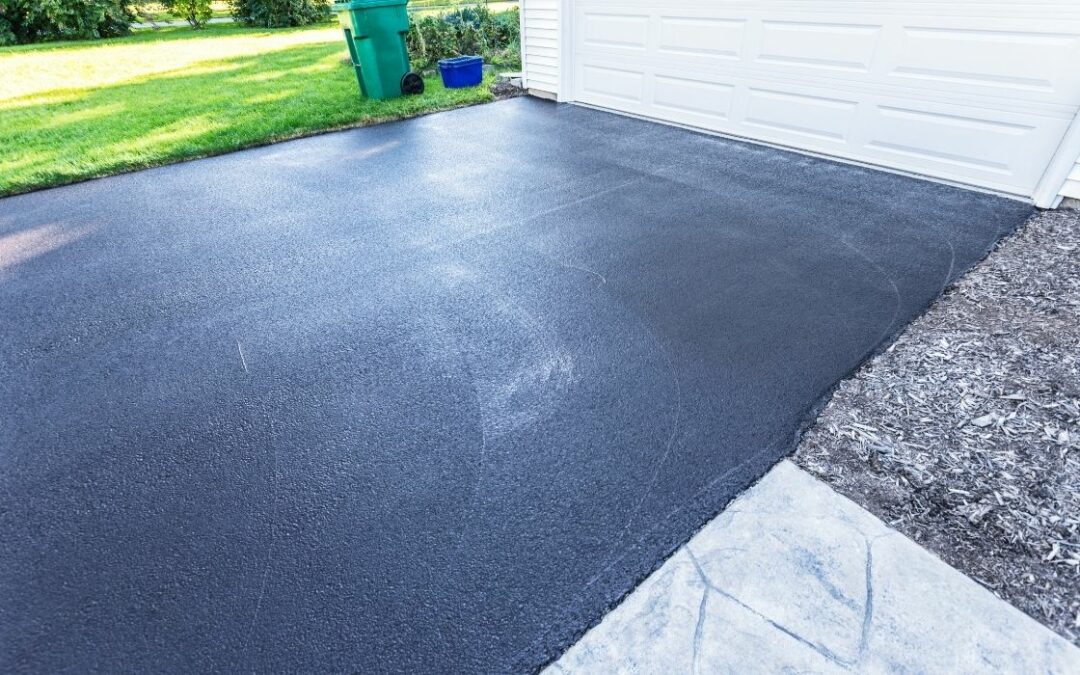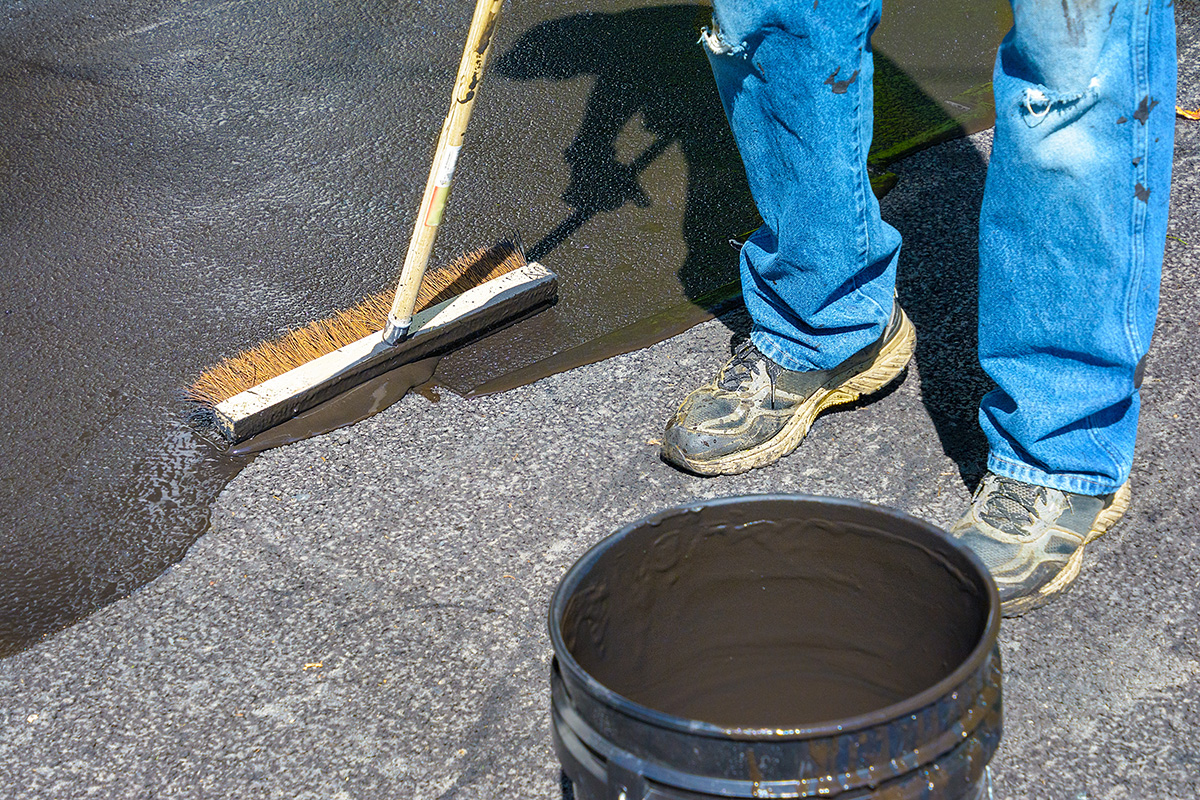Change Your Property's Looks: Commercial Car Park Leading and Asphalt Sealing Solutions
Change Your Property's Looks: Commercial Car Park Leading and Asphalt Sealing Solutions
Blog Article
Warm Mix Asphalt: A Lasting Option for Sidewalk
Hot Mix Asphalt (HMA) has emerged as a leading sustainable choice for pavement solutions, offering a myriad of cutting-edge modern technologies and ecological benefits. Its capacity to reuse products and minimize energy intake offers an engaging situation for its adoption in road construction tasks. The lasting performance and resilience of HMA make it a preferred alternative for facilities development. As the need for eco-friendly building and construction practices expands, exploring the nuances of HMA's sustainability can offer valuable understandings into the future of sidewalk options.
Ecological Benefits of Warm Mix Asphalt

In Addition, Hot Mix Asphalt assists to alleviate urban warm island effects. Its dark shade takes in sunlight, minimizing the quantity of warmth showed back right into the ambience contrasted to lighter-colored sidewalks. This can reduce ambient temperatures in urban locations, decreasing the need for air conditioning and inevitably lowering energy consumption.
Furthermore, Warm Mix Asphalt adds to enhanced stormwater management. Its porous nature permits water to recharge and infiltrate the sidewalk groundwater materials, lowering overflow and the risk of flooding. These ecological advantages make Warm Mix Asphalt a lasting option for paving roads and highways.
Power Effectiveness in HMA Manufacturing
Is energy performance a crucial element in the manufacturing of Warm Mix Asphalt (HMA)? Power plays a substantial function in the production of HMA, impacting both cost and ecological sustainability. One crucial aspect of energy efficiency in HMA manufacturing is the usage of cozy mix asphalt (WMA) modern technologies.
Furthermore, advancements in plant innovations have actually led to more energy-efficient HMA manufacturing processes. By enhancing energy usage in HMA manufacturing, the sector can decrease its carbon impact while maintaining high-grade pavement materials.
Recyclability of Warm Mix Asphalt
The recyclability of Hot Mix Asphalt (HMA) is a crucial element of its sustainability and long-term environmental influence. HMA is one of the most recycled materials in the United States, with over 100 million lots of reclaimed asphalt sidewalk (RAP) being recycled each year in new pavement building. Recycling HMA uses numerous ecological advantages, such as reducing the need for virgin materials, reducing power intake throughout manufacturing, and lowering the quantity of waste sent out to land fills.
The process of recycling HMA learn the facts here now involves milling the existing sidewalk, squashing it right into smaller sized items, and blending it with brand-new accumulation and asphalt binder to produce a recycled mix. This recycled mix can usually execute along with or also far better than standard HMA, while calling for less raw products and creating visit their website lower greenhouse gas discharges. By incorporating RAP into brand-new sidewalk tasks, roadway companies can save natural resources, reduce prices, and decrease the ecological footprint of road building and maintenance tasks. On the whole, the recyclability of HMA plays a significant duty in advertising sustainable practices within the sidewalk market.
:max_bytes(150000):strip_icc()/barricade-tape-sealed-driveway-big-56a583145f9b58b7d0dd3d87.jpg)
Long-Term Efficiency of HMA
Asphalt pavements show durability and durability over an extended duration, mirroring the long-lasting efficiency of Hot Mix Asphalt (HMA) Furthermore, advancements in HMA innovation, such as the usage of polymer-modified binders and warm mix asphalt, have actually further improved the longevity and durability of HMA sidewalks. By focusing on quality building and construction and maintenance methods, HMA proceeds to prove itself as a economical and lasting service for resilient sidewalk infrastructure.

HMA: Durability and Sustainability
Showing both sturdiness and sustainability, Hot Mix Asphalt (HMA) has actually become a keystone in the building of long-lasting sidewalk infrastructures - regrading. HMA's resilience originates from its capability to hold up against heavy lots, severe weather, and high website traffic volumes, making it a trustworthy choice for roads, freeways, and flight terminal paths. The make-up of HMA, which generally consists of accumulations, binder, and filler, plays an important duty in enhancing its durability and resistance to wear his response and tear
Additionally, HMA's sustainability hinges on its recyclability and energy-efficient production process. The capacity to recycle reclaimed asphalt pavement (RAP) in brand-new HMA combinations reduces the demand for virgin products and decreases the environmental impact of pavement building and construction and upkeep. Additionally, the energy effectiveness of creating HMA depends on its reduced blending temperatures compared to other pavement products, causing lowered power consumption and greenhouse gas emissions.
Conclusion
In verdict, warm mix asphalt (HMA) supplies a lasting solution for pavement with its eco-friendly characteristics. HMA's recyclability, energy efficiency in production, and long-term resilience make it a green selection for roadway building and construction. By preserving all-natural sources, minimizing waste, and reducing greenhouse gas discharges, HMA plays a vital function in advertising sustainability in framework growth. Its ability to reduce urban warm island results better highlights its relevance in developing ecologically conscious and resilient sidewalk systems.
HMA is one of the most recycled materials in the United States, with over 100 million tons of redeemed asphalt pavement (RAP) being recycled yearly in brand-new sidewalk construction.The procedure of recycling HMA entails grating the existing sidewalk, squashing it into smaller sized pieces, and blending it with new accumulation and asphalt binder to create a recycled mix.Asphalt sidewalks demonstrate longevity and durability over an extensive period, mirroring the long-lasting efficiency of Hot Mix Asphalt (HMA) Furthermore, developments in HMA modern technology, such as the use of polymer-modified binders and cozy mix asphalt, have actually even more boosted the sturdiness and long life of HMA pavements. The capacity to reuse recovered asphalt sidewalk (RAP) in new HMA mixes lowers the demand for virgin products and decreases the environmental effect of sidewalk construction and maintenance.
Report this page